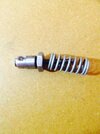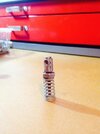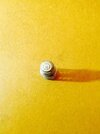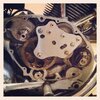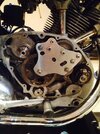Hi guys,
I need some assistance before starting to pull the timing cover off my Series C Comet.
I was out riding with some friends and my exhaust lifter stopped working. I have ridden it home and decided I would check the exhaust valve clearance. I noticed that during a slow turn of the motor the push rod is loose at certain parts of the revloution.
I am a novice and I am wondering if the two issues are related or separate, my guess is that they would be.
I am looking for advice before I get to far into a major removal of parts.
Does anyone have any experience with this?
Thanks,
Eugene.
I need some assistance before starting to pull the timing cover off my Series C Comet.
I was out riding with some friends and my exhaust lifter stopped working. I have ridden it home and decided I would check the exhaust valve clearance. I noticed that during a slow turn of the motor the push rod is loose at certain parts of the revloution.
I am a novice and I am wondering if the two issues are related or separate, my guess is that they would be.
I am looking for advice before I get to far into a major removal of parts.
Does anyone have any experience with this?
Thanks,
Eugene.


